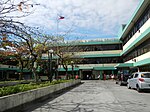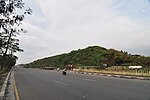CAMANA Water Reclamation Facility
The Caloocan–Malabon–Navotas (CAMANA) Water Reclamation Facility is a sewage treatment plant under-construction in Caloocan, Metro Manila, Philippines. If completed, it will become the largest sewage treatment plant in the Philippines with a capacity to process 205 million liters (54,000,000 U.S. gal) of used water daily.The groundbreaking ceremony for the CAMANA Water Reclamation Facility project of Manila Water was held in November 2019, but actual construction was announced to have started in March 2021. The project is an expansion of the existing 26 MLD Dagat-Dagatan Sewage Treatment Plant which was built in the 1980s. Manila Water contracted DM Consunji Inc. (DMCI) to work on the expansion. Japanese firm JFE Engineering Corporation is also involved in the project.The sewage treatment plant is intended to serve the southern exclave of Caloocan, Malabon and Navotas which is within the scope of Manila Water's west zone. It is expected to become operational in 2024.
Excerpt from the Wikipedia article CAMANA Water Reclamation Facility (License: CC BY-SA 3.0, Authors).CAMANA Water Reclamation Facility
Gloria Street, Caloocan Maypajo (District 2)
Geographical coordinates (GPS) Address Nearby Places Show on map
Geographical coordinates (GPS)
| Latitude | Longitude |
|---|---|
| N 14.6375 ° | E 120.96944444444 ° |
Address
Dagat-Dagatan Sewage and Septage Treatment Plant
Gloria Street
1410 Caloocan, Maypajo (District 2)
Philippines
Open on Google Maps










